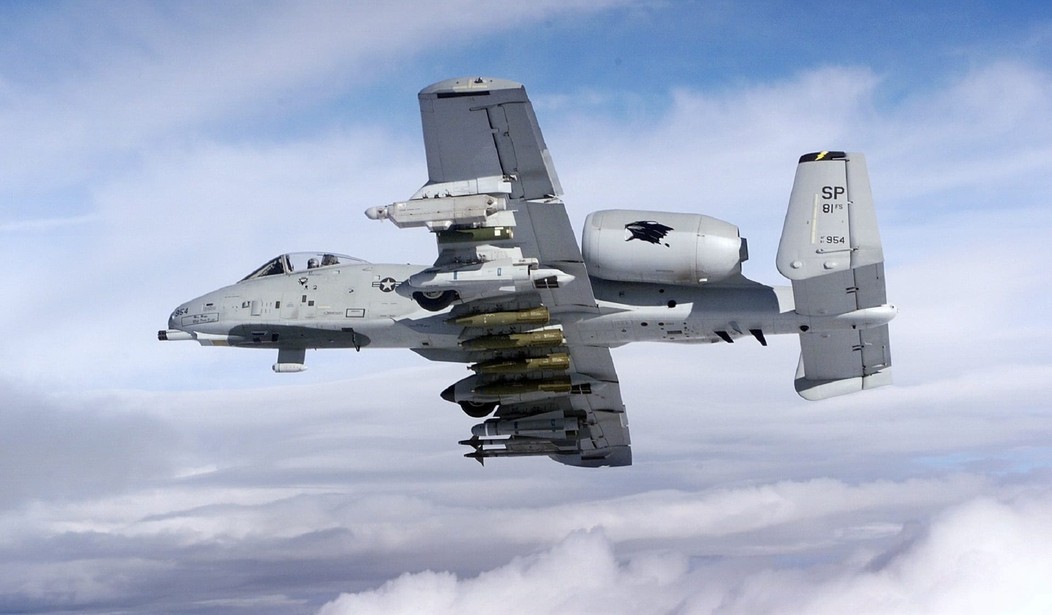The Air Force has made official its request to buy a few off-the-shelf planes for testing in the vital ground-attack role. Military.com reports that the request is for small numbers of Textron Aviation AT-6 Wolverine and Sierra Nevada/Embraer A-29 Super Tucano aircraft to increase “partner capacity, capability, and interoperability via training and experimentation.” What that means is, the Air Force wants to play around with some new, and far less expensive, turboprop planes to see if they can take on some of the jobs of the aging A-10 fleet of ground-pounder jets.
Air Force Chief of Staff Gen. David Goldfein wrote, “Our focus is on how a light attack aircraft can help our allies and partners as they confront violent extremism and conduct operations within their borders.”
The venerable A-10 is in a tricky position. Everyone loves the Warthog, and for good reason. Fairchild Republic designed the slow-moving, low-flying jet around a massive 30mm GAU-8 Avenger rotary cannon. The electrically controlled, hydraulic-driven gun weighs two tons with a full load of nearly 1,200 rounds of armor-piercing shells. The shells are, to the best of my knowledge, unique in that they feature an aluminum body around a smaller depleted uranium core. That core is heavy, dense, and can reach out and slice open — like butter — a heavily armored main battle tank from up to 4,000 feet away.
The A-10’s original mission was to rip through long columns of Soviet armor in Western Europe, while providing maximum protection to its pilot, and maximum survivability for the jet itself. The pilot is surrounded on three sides by a titanium “bathtub” around the bottom and sides of the cockpit, and the aircraft’s flight systems feature similar protections. All told, the A-10 is protected by no less than 1,200 pounds of the super-hard metal. As if that weren’t enough, the ‘Hog is designed to keep on flying even with one engine, half of the tail, one elevator, and half a wing missing. The Warthog — officially the Thunderbolt II — can take it just as well as it dishes it out.
If you’re thinking that a plane meant to rip through 40-ton Soviet tanks with the greatest of ease might be overkill against tent-dwelling terrorists driving cheap SUVs, you’re absolutely correct. As a big believer in overkill, I really have no problem with that. Still, the A-10 is increasingly a little too much of one thing, and a little too little of another.
While the entire Warthog fleet is being rebuilt and upgraded with modern avionics and targeting systems to the A-10C standard, nothing can change the fact that the last jet left the Fairchild assembly line 35 years ago. Those airframes are getting up there in years, which means they’re getting more expensive to fly, and more expensive to maintain. So maybe an aging, irreplaceable, $45 million jet isn’t always the best thing to fly against Third World jihadis.
On the other hand, the A-10’s design is showing its age against near-peer adversaries like China and Russia. About as stealthy as my nine-year-old in a candy store, the Warthog isn’t nearly as survivable against enemy air defenses as it used to be. Antiaircraft missiles are much more effective than they were when the A-10 blueprints were drawn in 1972, and there are a lot more of them out there, too. So what we have is a great plane, but one that is:
• Too expensive to fly against jihadis all the time
• Too vulnerable for use against near-peer foes, at least until stealthy F-35s can suppress the bad guys’ air defenses
The A-10’s position is, as I said, increasingly tricky.
Which brings us back to the Air Force’s little experiment with the AT-6 Wolverine and the A-29 Super Tucano. Small and light, the AT-6 is built on the T-6 Texan II platform, and can be had for a small fraction of the price of a new A-10 (and we’re not getting new A-10s at any price). The Brazilian-designed A-29 Super Tucano has similar specs and a similar price. Neither has the A-10’s tank-ripping abilities, but each is also much cheaper to buy, fly, and maintain — and more than capable against your typical jihadi in a low-threat environment.
The T-6 is already in service with 11 air forces around the world, from Canada to Iraq to New Zealand. The USAF even flies a few, but only in a training role. So it isn’t as though if we bought the combat-ready AT-6, we’d be starting completely from scratch. Same story with the Super Tucano.
So if it makes financial sense — that is, if the Air Force could save money with a small fleet of turboprop ground-pounders, and take some heat off the aging A-10s — then I say: Why let our “allies and partners” have all the inexpensive, low-flying fun?










Join the conversation as a VIP Member